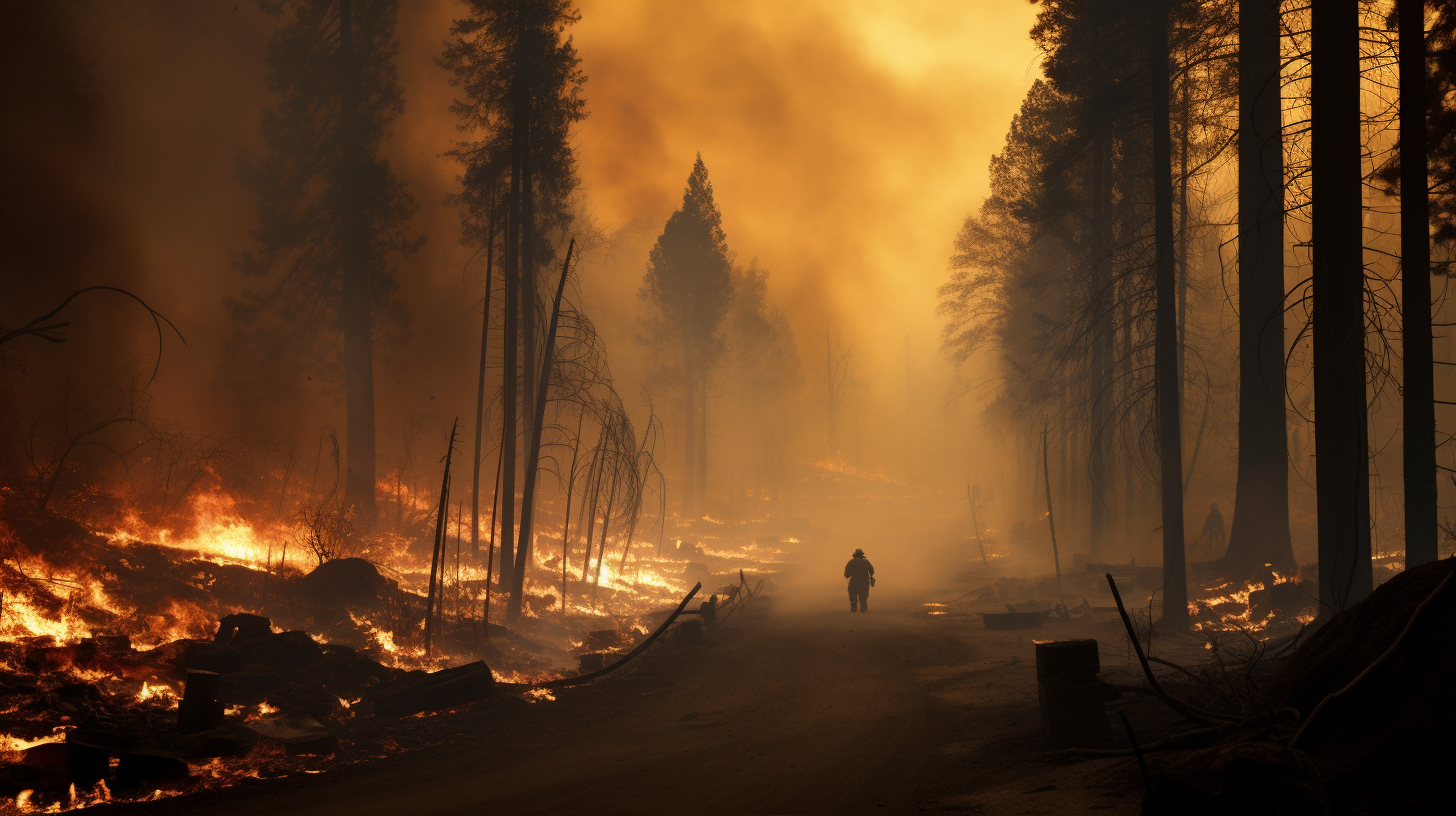Emerging from a smoky haze, the shimmering ember of a world refusing to extinguish its burn; this is the reality for those living amidst the inevitability of fire. Shadows cast not by structures but by the ashen silhouettes of a scorched ecosystem—an image too common in our perennial wildfire era.
Once, wildfire season was a clearly defined period of predictable misfortune; today, it is a misnomer, as seasons suggest an end. Now, infernos punctuate our calendar year with a relentless ferocity, their charred fingerprints marking the land indelibly. In the swathes of territory forever smoldering, humans endure, adapt, and grimly admire the fiery spectacle that has overthrown their former lives.
Characters emerge among these ashes, testimony to human resilience. ‘To live is to dance with flames,’ quips Miranda, a survivor turned firefighter, whose blistered hands and smoke-filled lungs are but trophies of an unchosen lifepath. Her story is not singular; this is an intricately woven tapestry of lives converging amid catastrophe.
The once picturesque township of Glenview serves as a stark example. Encircled by nature’s tinder, it has transformed into a community synonymous with survival. Education has adopted a fiery curriculum—children as young as six learn the art of firebreaks and the language of the flames. Their playground rhymes are replaced by the crackling sonnets of combustion and the hissing choruses of ember attacks.
Chroniclers have penned volumes on the return of nature’s dominance over abandoned domains and the unrelenting force of superstorms, yet the narrative of fire remains as fluid as the blaze itself—capricious, unpredictable, and all-consuming. As ecosystems retract and morph under the flames, wildlife finds itself either fleeing or adapting in a world unrecognizable from the one of storybooks and documentaries.
Entire species are rendered nomadic, redefining migration patterns out of necessity rather than instinct. Those witnessing the relentless infernos often speak of ‘fire followers,’ plant species that only burgeon post-conflagration, painting a vibrant but ephemerally lush landscape against a backdrop of char.
The structure of community and governance is conversely petrified by the threat of wildfires. Townships resemble more fortified compounds meant to repel a besieging force, rather than the once tranquil abodes of a less fiery past. Residents speak not of the weather but of the winds—will they carry salvation in the form of rain, or damnation as they fan the fires?
Glimmers of hope do flicker, as advancements in firefighting technology and early warning systems showcase human ingenuity in the face of adversity. Yet, underlying these triumphs is a resounding melancholy for a battle that seems as eternal as it is pyrrhic.
In the literary auditorium of dystopian reality, stories of the wildfire prevail as cathartic reminders and reflective tokens. They serve not just as a warning, but as a somber valentine to a world that once was, and to the persistence required in a world that simply, perpetually, burns.
